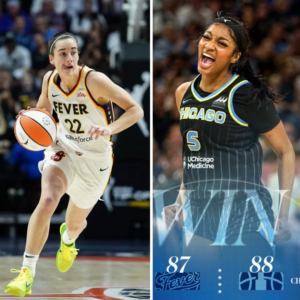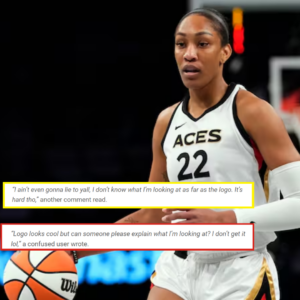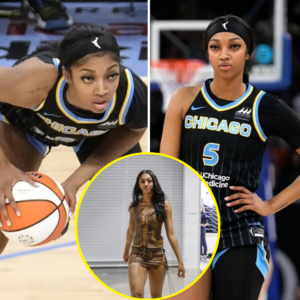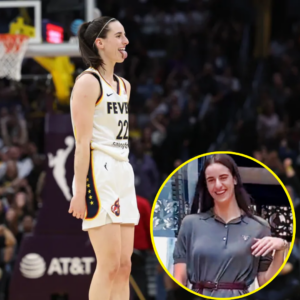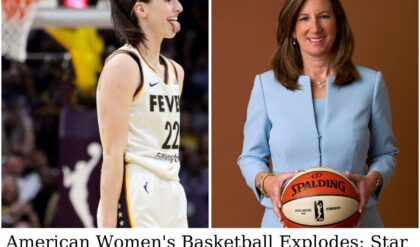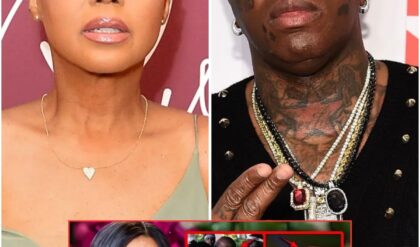INDIANAPOLIS — The bruises on Caitlin Clark’s forearms and knees have been on the knees and forearms of WNBA rookies for decades, long before Clark burst onto the professional basketball court making waves the women’s sport has never seen. Bo Boroski is sure of that.
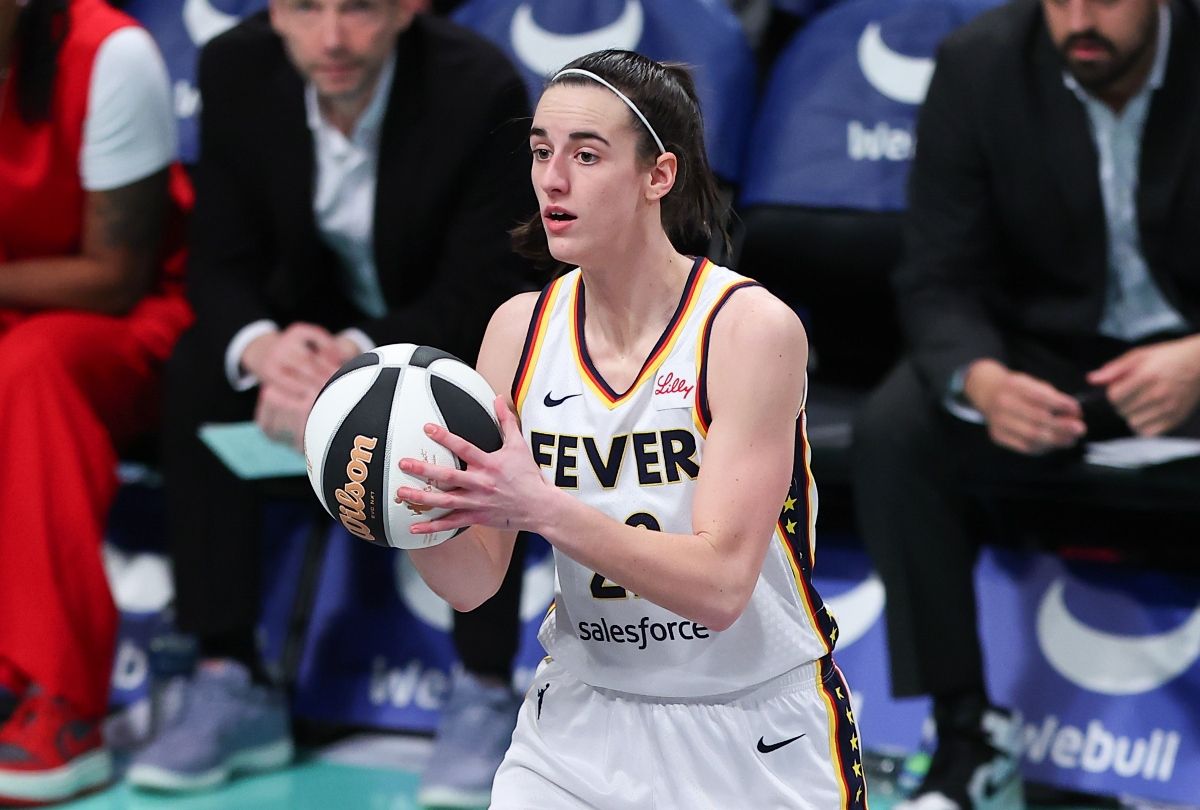
The treatment the Indiana Fever rookie superstar — dubbed by some as the savior of women’s basketball — is getting on the court is par for the game. The rough shoves and swipes and sometimes scratches and smacks are nothing new, and nothing any rougher than other newcomer to professional sports has endured.
Even the flagrant foul to Clark’s head when Angel Reese was going for a block in Sunday’s game against the Sky. Even the Chennedy Carter hip-check flagrant foul against Clark two weeks ago. People seem to forget those fouls have happened plenty of times in the WNBA — and on every other court across the world from youth to pro men’s.
“I think what’s changed is the amount of focus due to the explosion in popularity of the sport,” said Boroski, who spent more than 20 years as a basketball official, finishing his career refereeing three straight men’s NCAA Final Fours. “So, you’ll never convince me the level of physicality in any sport has changed as much as the public would like to believe.”
Where the calls and the plays against and for Clark gets compounded is when other variables are brought into the equation, such as social media and other players within the league, he said.
“And it compounds into a, ‘We’ve never seen this before’ moment,” said Boroski. “We have seen it. And by the way, she’s handling it with extreme grace.”
After the flagrant foul to Clark’s head Sunday by Reese in the Fever win against the Sky, Clark said it was “just a part of basketball. It is what it is. Trying to make a play on the ball, get the block. It happens.”
Reese said the foul was not intentional, calling it a “basketball play.”
The way Clark is being officiated, the calls and non-calls, the three technical fouls she’s accumulated, the flagrant hits, the grabs and the flopping from both sides has been scrutinized in a way no other player in the WNBA has been subject to before.
“I don’t think this is some new phenomenon. I think she’s being challenged because of who she is and the talent she is,” said Boroski. “And from an officiating focus, I think the WNBA has the appropriate mechanisms in place to make sure that it is taken care of.”
As Boroski sees it, there are three opportunities for Clark’s opponents to be held accountable.
“The most obvious mechanism is during real time when they witness acts against her, they have the opportunity. They also have the opportunity in-game at the replay monitor,” he said. “And then the league has a third mechanism to right any wrongs as it relates to flagrant acts.”
After that, all that’s left is the armchair referees in their living rooms making their own calls on whether Clark is being officiated fairly or not.
‘We hold our officials accountable’
The criticism of WNBA officials by fans — many now watching the league for the first time because of Clark — comes with plenty of misnomers about their training, pay and ability. In reality, the path to becoming a WNBA referee is just as stringent as landing in the NBA, said Monty McCutchen, the NBA’s senior vice president of referee development and training.
The league’s scouting department looks at more than 3,500 officials a year, then narrows the pool down to the top 100 candidates, which attend a grassroots camp. Out of that camp, the NBA takes the top 48 to 50 officials to a mid-level camp where 30 are chosen for an elite camp. At that camp, only a handful of finalists are chosen to officiate the NBA’s developmental G League.
Once in the G League, about one in five officials will make it to the NBA or the WNBA, said McCutchen.
“The norm is that you are in our pipeline for several years, two, three, four years, before you ever make the G League,” said McCutchen, a former NBA official. “Our referees have heard our messages of training for five, six, eight, nine years before they ever see a WNBA player. To suggest that they aren’t trained is not accurate.”
Once in the league, the average years of service for WNBA officials is eight, with more than a third having more than 10 years of experience, McCutchen said. Beginning salary is about $1,500 a game and, for more experienced officials, reaches more than $2,500.
“We’re pros,” said McCutchen. “But being a pro does not make you perfect. And most certainly, we at every level make mistakes. And when we do, we hold our officials accountable.”
One thing McCutchen wants to make very clear is that nothing has changed with WNBA officiating just because Clark has come into the league.
“We don’t referee any individual player any different than any other individual player,” he said. “The idea that we would ever separate a player out would go to the heart of what our integrity-based work is all about.”
News
Arrogant Angel Reese!!! Chicago Sky “Taunted” Fan Caitlin Clark With Viral Post.
The Chicago Sky have been listening to the noise from fans and haters alike this season. On Sunday afternoon, the Sky mounted a comeback win over Caitlin Clark and the Indiana Fever — marking their first win of the regular-season…
[PHOTO] – Fans Simultaneously Have “Confusing” Questions About The New Nike Logo Of Las Vegas Aces Superstar A’ja Wilson
Fans are unsure what to make of A’ja Wilson’s new Nike logo following its unveiling. The sportswear company announced that Wilson would be getting her own signature sneakers in 2025 before the start of the current season, which will put…
Angel Reese Always Makes The Online Community “Gasp” With Her pre-match Outfits, And This Time Is No Exception – The Image Of Her Wearing The Outfit Makes The Internet “Crazy”
Angel Reese Always Makes The Online Community “Gasp” With Her pre-match Outfits, And This Time Is No Exception – The Image Of Her Wearing The Outfit Makes The Internet “Crazy” Angel Reese did not come to play around despite having…
[VIDEO] – Caitlin Clark Showed Up To Tonight’s Clash vs. Angel Reese With A Dress That Was So Short, She Needed Her Hand To Keep It From Showing Too Much
Caitlin Clark’s pregame outfit was a bit shorter than we expected it to be ahead of her matchup vs. Angel Reese and the Chicago Sky on Sunday afternoon. The Indiana Fever rookie is playing her third professional game against her…
[VIDEO] – Seattle Storm Rookie Nika Muhl Turned Heads With Her Eye-Popping Pregame Outfit Before Sunday’s Game
Former UConn guard Nika Muhl went viral after her defensive performance against Caitlin Clark during the 2023 NCAA Tournament. She has quickly made a name for herself in the WNBA despite not playing very many minutes. Seattle Storm rookie Nika…
“Everyone Is Watching Right Now” – The Stadium Was Filled With spectators to watch the two supposed eternal rivals, Reese and Clark
The budding stars of the WNBA, Caitlin Clark, and Angel Reese, met for a nail-biting game on Sunday. The thrilling game finished with the latter having the last laugh, but there was a positive note for both the players, their…
End of content
No more pages to load
